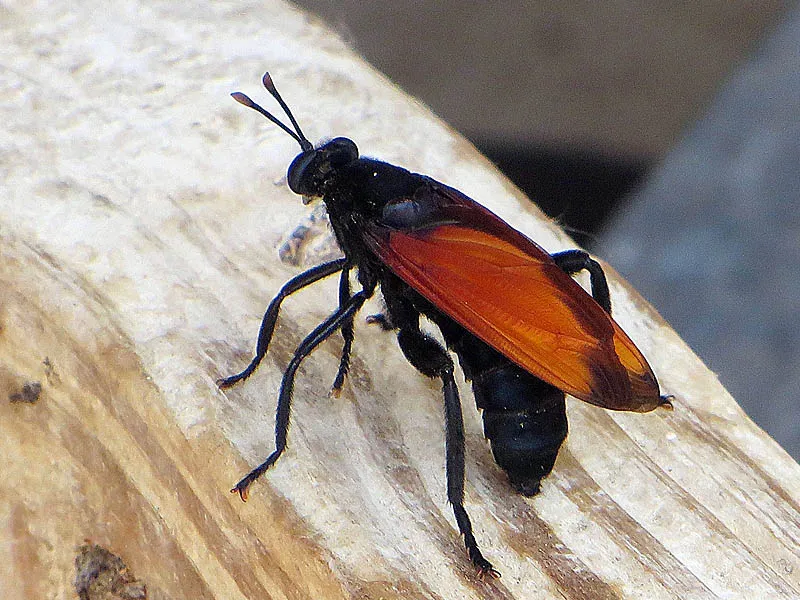What is a Florida Tarantula Hawk
The Florida tarantula hawk (Pepsis grossa) is a large, striking wasp known for its remarkable size, potent sting, and unique predatory behavior. This insect is a member of the Pompilidae family, a group of spider wasps. The tarantula hawk gets its name from its primary prey tarantula spiders. These wasps are a fascinating part of Florida’s diverse ecosystem, playing a crucial role in controlling spider populations. Despite their intimidating appearance and the intense pain of their sting, tarantula hawks are generally not aggressive towards humans unless provoked. Their life cycle, hunting methods, and habitat preferences make them a captivating subject for nature enthusiasts and scientists alike. Understanding the tarantula hawk helps us appreciate the intricate balance of nature and the importance of each species within an ecosystem.
Appearance and Characteristics
Size and Physical Traits
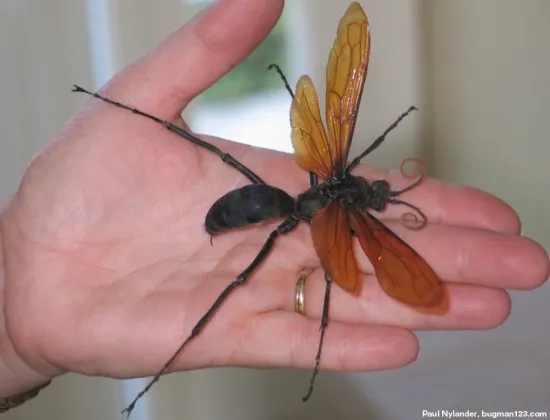
The Florida tarantula hawk is one of the largest wasps in the world, with females often reaching up to 2 inches in length. Their size is one of their most striking features, making them easily recognizable in their environment. Their robust bodies and powerful legs are perfectly adapted for hunting and transporting tarantulas, their main source of food for their larvae. The wingspan can reach up to 3 inches, adding to their imposing presence. The sheer size of these wasps is a testament to their strength and predatory prowess, making them a formidable insect in the Florida landscape. The size difference between males and females is also notable, with males typically being smaller than females. This difference is a common characteristic among many wasp species.
Coloration and Markings
Tarantula hawks are known for their stunning appearance. The body is typically a deep metallic blue or black, while their wings display a rusty orange hue, providing a stark contrast. This vibrant coloration serves as a warning to potential predators. The bright colors act as a visual cue, indicating the presence of a painful sting. The coloration varies slightly depending on the individual and the specific region. The contrast between the dark body and the orange wings is a defining characteristic, making them easily identifiable. This striking appearance is not just for show it is a functional adaptation, contributing to their survival by deterring threats.
Habitat and Distribution
Where to Find Tarantula Hawks in Florida
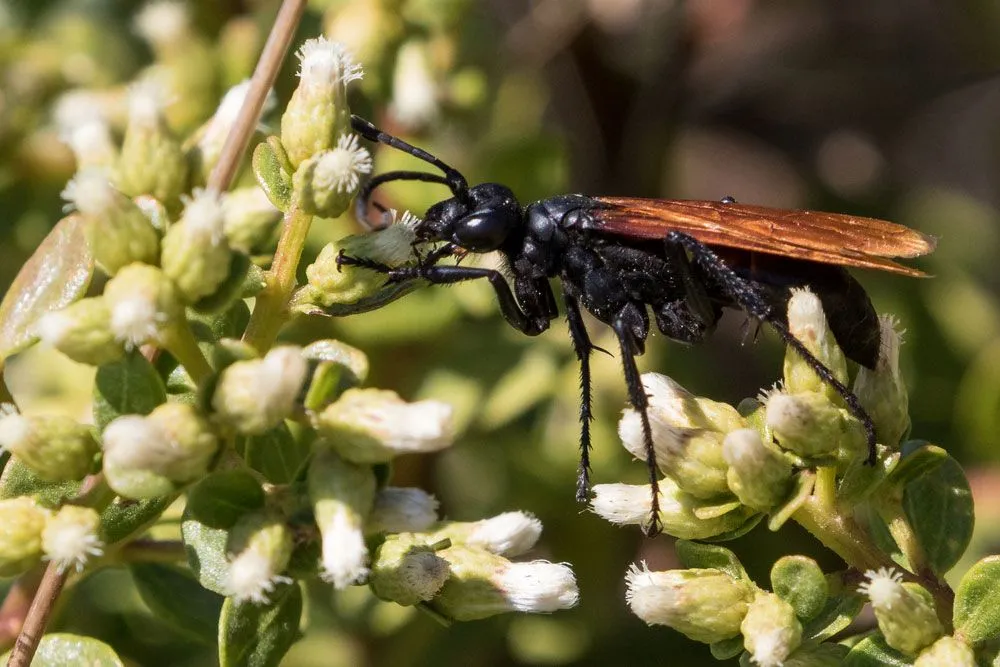
Tarantula hawks are found throughout Florida, from the southern tip to the northern regions. They thrive in various habitats, including open areas, scrublands, and areas with sandy soil, where they can find tarantulas. They are particularly prevalent in areas with abundant spider populations and suitable nesting sites. These wasps are also seen in urban areas with gardens and parks. They are adaptable insects, which allows them to inhabit various environments across the state. Observing these insects can be done in many different spots in Florida. The best time to spot them is during the warmer months, when they are most active. The wide distribution shows the adaptability of the tarantula hawk.
Preferred Environments
Tarantula hawks prefer habitats that support both tarantula spiders and suitable nesting locations. They often frequent areas with ample sunshine and sandy or loamy soils, where they can construct their nests. These wasps are commonly found near the ground level, searching for their prey or scouting nesting sites. They also appreciate areas with flowering plants, as they feed on nectar. The combination of these elements provides both food sources and opportunities for reproduction. The presence of these habitats is critical to supporting the tarantula hawk population. The wasps play a part in maintaining the balance of the ecosystem.
The Tarantula Hawk’s Life Cycle
Nesting and Egg Laying
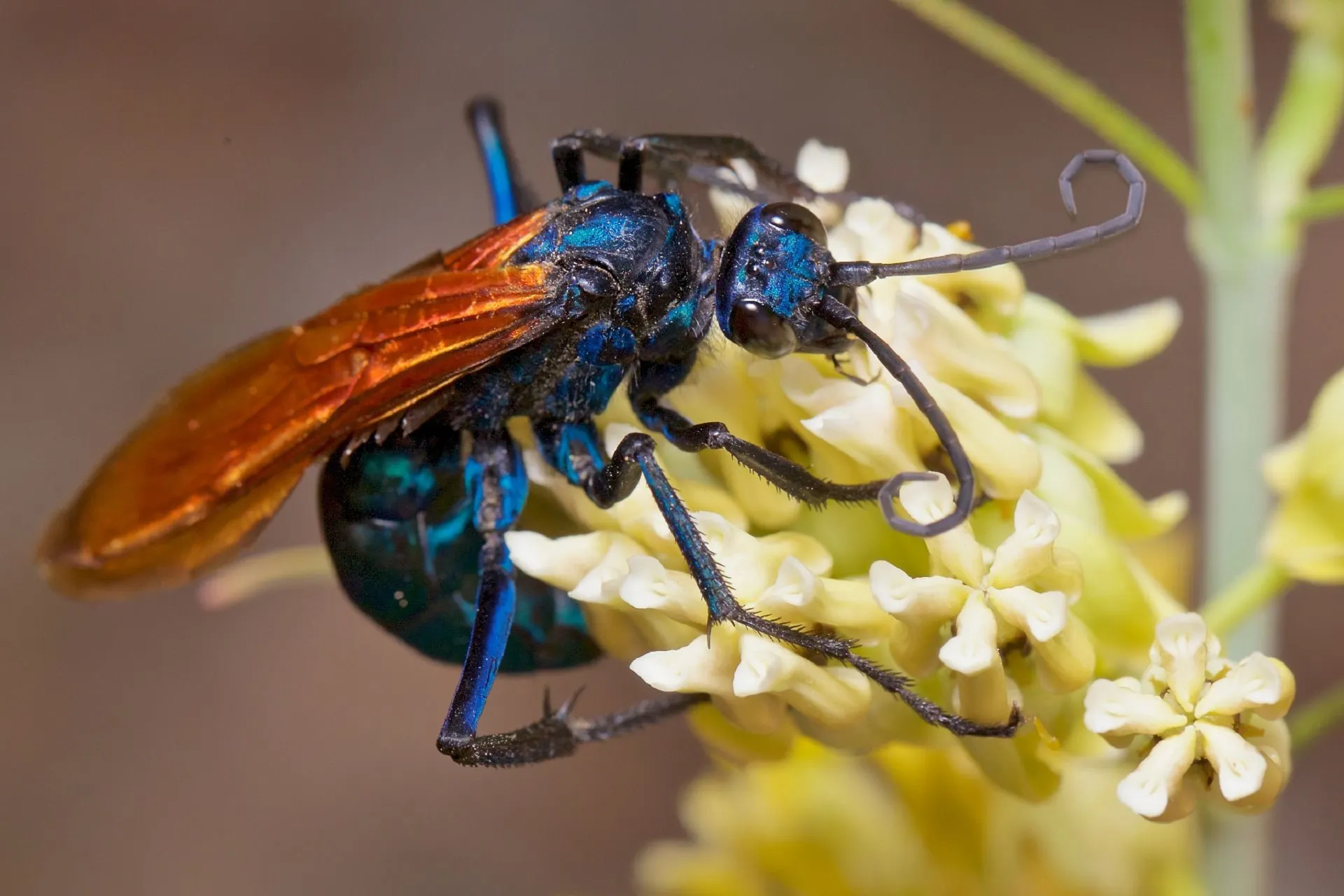
Female tarantula hawks build nests, often in the ground or in existing cavities. After paralyzing a tarantula with their sting, they drag the spider to the nest. They then lay a single egg on the abdomen of the paralyzed spider. The spider remains alive, serving as a food source for the wasp larva once it hatches. The process of nest construction and egg laying is a remarkable display of insect behavior. The wasp’s ability to paralyze the spider without killing it is a key aspect of its survival strategy. The nests are typically small, well-hidden, and carefully constructed to protect the developing larva. This entire process showcases the meticulous nature of the tarantula hawk.
Larval Stage and Development
Once the egg hatches, the larva begins to feed on the paralyzed tarantula. The larva consumes the spider from the outside, growing rapidly throughout this stage. The spider remains alive for a short period, providing a constant food supply. The larva undergoes several molts as it grows. After consuming the spider, the larva spins a cocoon and pupates within the nest. The duration of the larval stage varies depending on environmental conditions and the size of the spider. The development within the cocoon marks the transformation from larva to adult wasp. This stage highlights the remarkable survival mechanisms of the tarantula hawk.
Feeding Habits and Diet
What Do Tarantula Hawks Eat
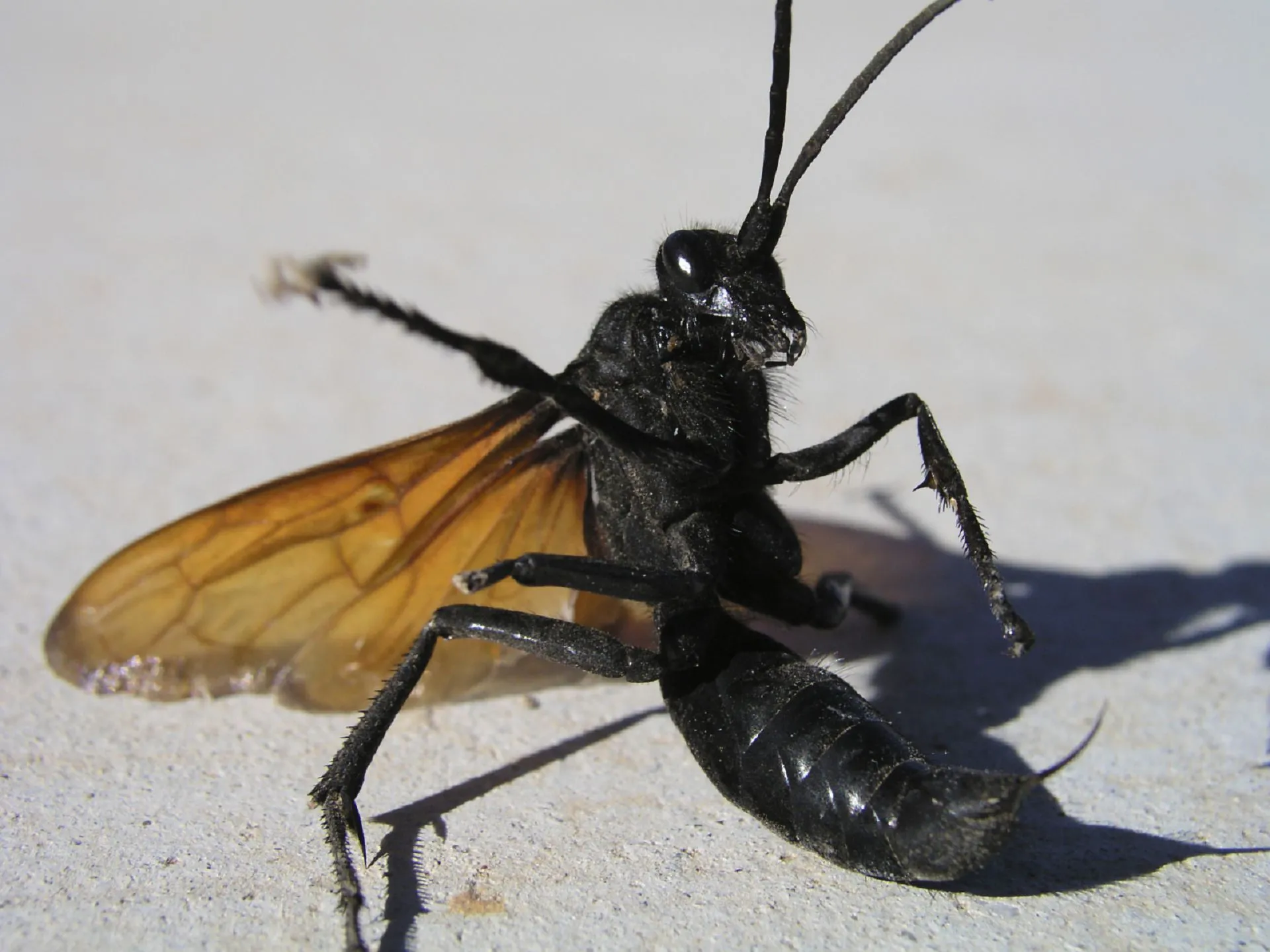
The primary food source for the tarantula hawk larva is the paralyzed tarantula spider. Adult tarantula hawks primarily feed on nectar from flowers. This diet provides the energy needed for flight and reproduction. The larva’s exclusive diet of tarantula spiders is critical for its development. Adult wasps will often visit flowers, such as milkweed, to refuel. This creates an interesting dynamic, where the larva relies on a fearsome predator, while adults require nectar for energy. The diet highlights the specialized nature of the tarantula hawk.
The Tarantula Hawk’s Sting
Venom and Effects
The sting of a tarantula hawk is legendary for its extreme pain, which has been described as one of the most painful insect stings known to humans. The venom is designed to paralyze its prey, not to kill, which allows the wasp to transport the spider back to its nest. While the sting is excruciating, the venom is not generally life-threatening to humans. The pain typically subsides within a few minutes, but the intensity can be overwhelming. The primary effect of the venom is immediate and intense pain. The venom’s primary purpose is to immobilize prey. First aid is crucial in case of a sting.
First Aid and Precautions
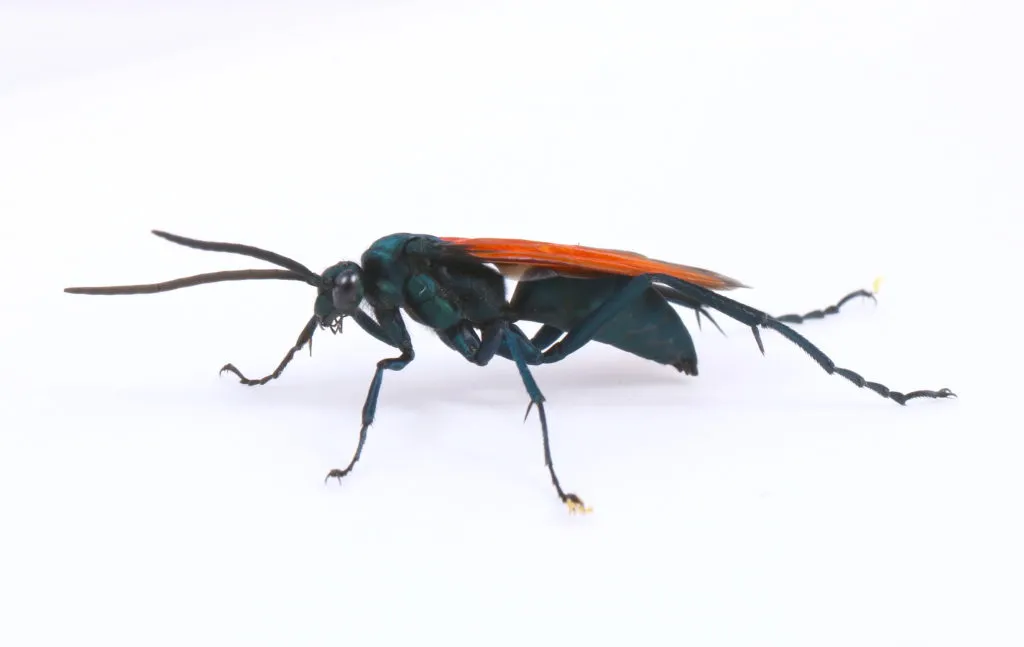
If stung by a tarantula hawk, it’s essential to remain calm and seek a safe environment. Remove the stinger if it’s still present, using a scraping motion rather than squeezing. Applying ice to the sting site can help reduce pain and swelling. Over-the-counter pain relievers can help manage the discomfort. While the sting is extremely painful, severe reactions are rare. Individuals with allergies should seek immediate medical attention. Preventing stings involves avoiding the wasp and not disturbing them. Being aware of their habitat and behavior is crucial. Understanding the sting and knowing how to handle it is key to the situation.
In conclusion, the Florida tarantula hawk is an awe-inspiring insect with a fascinating life cycle and unique predatory behavior. Their remarkable size, striking appearance, and potent sting make them stand out in Florida’s diverse ecosystem. From their hunting strategies to their role in controlling spider populations, tarantula hawks are a testament to the intricate balance of nature. While their sting is infamous, their role in the ecosystem makes them a captivating subject for study and observation. Appreciating these creatures encourages us to respect and protect the natural world.
